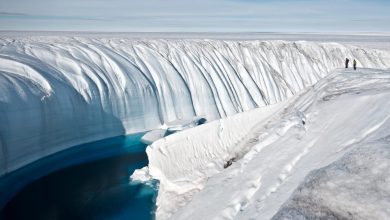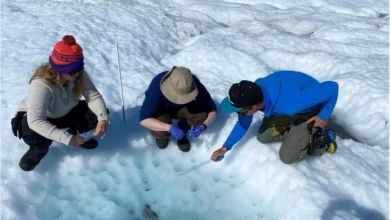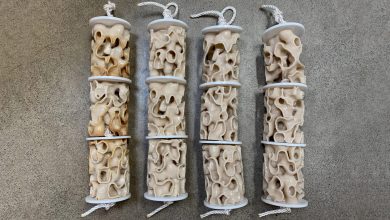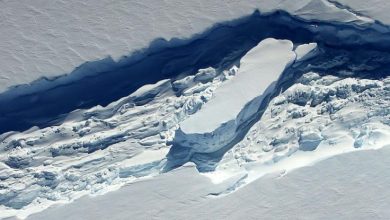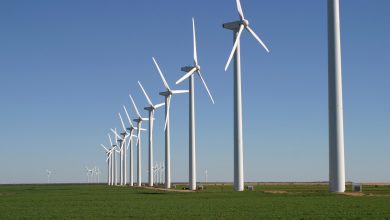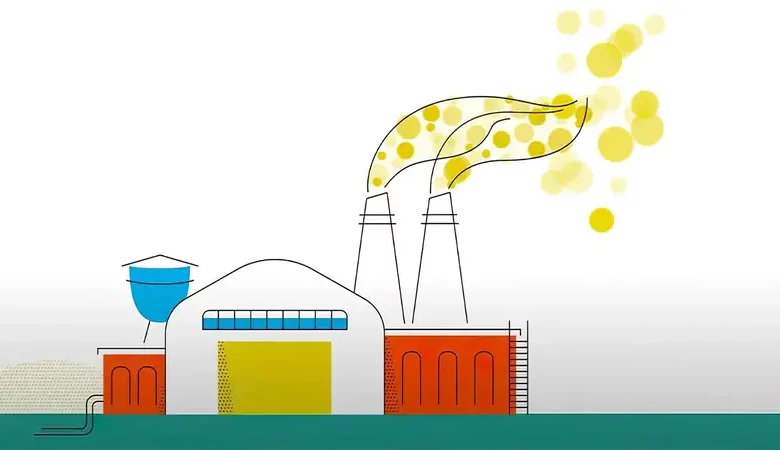
Carbon dioxide (CO2) emissions, which account for 81% of all greenhouse gases, pose a significant challenge to Earth’s climate. As natural methods are unable to fully counteract the rising levels of human-produced emissions, scientists and policymakers are exploring carbon capture, utilization, and storage (CCUS) techniques to reduce atmospheric CO2. These methods include ocean alkalinity enhancement, direct air capture, carbon offsets, carbon farming, reforestation, and afforestation. Newer strategies, such as accelerated limestone weathering, geological sequestration, and solar fuels, are also being researched. The global push for carbon reduction is partly driven by the Paris Climate Agreement, which aims to limit the increase in Earth’s average global surface temperatures to no more than 2 degrees Celsius by 2050. Credit: Caltech
Scientists and policymakers are pursuing carbon capture techniques like CCUS, direct air capture, and reforestation to mitigate the harmful effects of CO2 emissions, driven by the Paris Climate Agreement’s goal to limit global temperature increases to no more than 2 degrees Celsius by 2050.
Carbon dioxide (CO2) is a greenhouse gas that traps heat and warms the planet. Because of the burning of fossil fuels, the amount of CO2 in the earth’s atmosphere is higher than it has been in at least one million years.
Other gases contribute to climate change, but CO2 poses the greatest challenge: It accounts for 81 percent of all greenhouse gas emissions and can linger in the atmosphere for thousands of years. Methane, in comparison, has a lifetime of a decade.
Why do we need to remove CO2?
Nature mitigates carbon and reduces some of the effects of climate change: Plants, trees, and algae in the ocean turn CO2 into oxygen through photosynthesis, and the ocean absorbs and stores CO2 in ocean sinks. But nature cannot withstand the rising levels of human-produced emissions. Consequently, Earth and the people on it have experienced the effects of climate change, such as more frequent and intense weather events.
That is why, in addition to efforts that reduce emissions through decreased fossil fuel use, scientists, engineers, and policymakers are pursuing techniques to decrease the CO2 that reaches and stays in the atmosphere and oceans.
Currently, 40 million tons of CO2 are captured from power and industrial facilities each year. But the International Energy Association estimates that number needs increase by more than 100 times to meet the United Nations’ energy-related sustainable development goals. Some scientists believe implementing these techniques may be more feasible than decarbonizing certain industries, such as long-distance transportation and the airline industry.
Methods of removing and storing carbon
Carbon capture, utilization, and storage (CCUS) involves collecting CO2 from emission sources such as coal-burning power plants and converting it to other products, storing it, or burying it. Ocean-based solutions, such as ocean alkalinity enhancement, increase the ocean’s natural ability to remove and store CO2. Direct air capture physically and chemically pulls existing CO2 from the atmosphere and returns it to the ecosystem in less harmful forms, such as oxygen or low-carbon synthetic fuel.
Policy makers attempt to reduce CO2 emissions by promoting carbon offsets, which allow companies to compensate for the CO2 they emit by paying another entity to remove carbon elsewhere.
Methods to capture, sequester, and pull CO2 are gaining traction today partly because of the Paris Climate Agreement, which calls for limiting the jump in Earth’s average global surface temperatures to no more than 2 degrees Celsius by 2050.
Examples of current carbon removal approaches:
- Carbon farming is a set of practices, such as leaving crop residues in the field, that increase the amount of CO2 crops capture and store in soil. Carbon farming has been shown to result in healthier soil and increased crop yields as well. Recommended practices and climate-mitigation potential vary by location and should be based on experimental data.
- Direct air capture stations use large, powerful fans to draw in existing carbon emissions from the atmosphere. Once inside a capture station, the air undergoes a series of chemical reactions that cause CO2 to separate from the rest of the air. The concentrated CO2 can then be stored underground, sold to beverage companies that need carbonation for their drinks, or converted into synthetic fuel. (Although burning synthetic fuel rereleases CO2 into the atmosphere, this use could still provide benefits by replacing fossil fuel.) As of 2020, there were 15 direct air capture stations throughout the world and together, they scrubbed 9,000 tons of CO2 a year, far less than other techniques that remove CO2 at the gigaton scale. In 2021, the world’s largest direct air capture station opened in Iceland.
- Reforestation (reestablishing forests) and afforestation (creating new forests) are popular and low-technology approaches for carbon capture and removal. The addition of 2.2 billion more acres of forest could store a total of 205 gigatons of CO2, according to a 2019 report published in Science.
Examples of other new and emerging strategies for removing CO2:
- Accelerated limestone weathering builds on a natural form of carbon sequestration in which compounds in calcium carbonate (found in shells on the ocean floor), seawater, and CO2 break down and turn into dissolved bicarbonate ions. The process usually takes tens of thousands of years, but researchers identified an enzyme that can make the reaction 500 times faster. In addition, USC and Caltech scientists, including Resnick Sustainability Institute researcher Jess Adkins are creating a prototype treatment tank for cargo ships that could one day transform flue gas into slightly saltier water that can be returned to the ocean. Instead of shells, the treatment tank uses limestone rocks, which are made of calcium carbonate, to ignite the chemical reaction.
- Geological sequestration proposes to capture carbon emissions at their source, such as at a power plant, then pressurize CO2 until it changes into a liquid. This method builds on a technique oil companies use to revive production in older wells. The carbon would then travel through a pipeline deep into Earth, where it would be stored under geological formations to seep into the pores of rocks or to mineralize into new rock. Researchers, such as Anima Anandkumar, Caltech’s Bren Professor of Computing and Mathematical Sciences, are using AI tools to determine the best places to inject carbon for safe and effective storage.
- Solar fuels leverage the sun’s abundant energy to create clean liquid fuel. Through their work on the Liquid Sunlight Alliance (and its predecessor, the Joint Center for Artificial Photosynthesis), researchers from Caltech and partner institutions have refined an artificial photosynthesis process that uses sunlight to split water into hydrogen and oxygen. They are now attempting to combine the separated hydrogen with carbon emitted from fossil fuel burning to power cars, homes, and factories.

